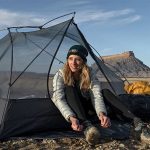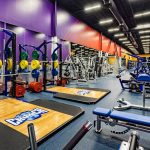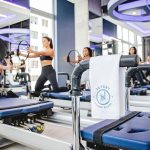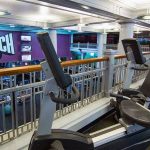Following up on a third fiscal quarter that saw it post a small profit despite weakness in all three geographic regions, Quiksilver, Inc. reported a bottom-line loss for the fourth fiscal quarter ended October 31 that was seen as better-than-expected.
The wider loss for the period comes as the surf and skate giant implemented numerous cost cuts to dampen the effects of a sluggish retail environment and sizeable charges. The weak quarter for the company capped off a year that included the completion of the sale of the troubled Rossignol division and the termination of hundreds of company employees as the brand struggled to restructure its operations in the midst of a tumultuous retail environment.
In a conference call with analysts, President and CEO Bob McKnight affirmed that the company had accomplished its restructuring objectives and is now “much better positioned to operate in today’s environment.”
In June, Quiksilver representatives laid out a three-part financial restructuring plan that included a $150 million loan from a private equity firm along with the incorporation of a new $200 million asset-based lending facility and the consolidation of its European debts, which it accomplished later in the year. Regardless of financial challenges, the company pledged to retain ownership of its Quiksilver, Roxy and DC brands.
Fourth quarter revenues fell 11% to $538.7 million compared to sales of $606.9 million in the year-ago period. The company reported a net loss of $15.7 million, or 12 cents per share, compared to a loss of $13.8 million, or 11 cents per share, in the year-ago period. Included in the results was a $22.3 million charge related to restructuring and retail store impairment that was partially offset by a tax adjustment of $3.3 million. Excluding the charges, fourth quarter net income was $3.2 million, or 2 cents per share.
Net revenues and income from continuing operations exclude the results of the Rossignol wintersports and golf equipment businesses, which are reported treated as discontinued operations.
Consolidated gross margins, hampered by a higher mix of wholesale discounts and retail markdowns in the Americas, slipped 50 basis points to 47.6% of sales in the quarter. The company said it reduced recurring SG&A expenses by $13 million in the quarter by ramping up cost-cutting measures in the Americas region.
With regards to a highly promotional retail environment, management for Quiksilver said the company would re-focus efforts to the core surf, skate and snow shops, which McKnight called the “lifeblood” of the industry. In store, McKnight said the company has seen basic items sell through well, noting particular strength from tees, fleece and hoodies bearing the basic Quiksilver mountain and wave logo. McKnight added that the company has introduced a segment of product offering within the Quiksilver brand that is exclusive to core shops. Early indications, he said, are that the program has been very well received by consumers.
In reference to the Roxy brand, McKnight confirmed that the junior market “continues to be very challenging” but stressed that the company would not chase the “fast-fashion model” that is typically defined by lower price points and a perceived lower quality of clothing. Roxy will continue to market its diverse product selection, McKnight said, along with an increased focus to core surf and snow shops.
At DC, Quiksilver will boost its focus on skate shoes made with vulcanized rubber, which the management said represents a “meaningful opportunity to capture market share ”
Like the Roxy and Quiksilver brands, the company will boost DC’s presence within the core channels to ignite interest in the brand.
By region, revenues in the Americas fell 22% compared to Q4 2008 as contraction increased in both the wholesale and retail distribution channels. The company has closed 11 stores in the Americas since the end of Q4 2008.
In Europe, sales in terms of constant currency were down 4% for the quarter. Exceptionally warm weather limited reorders in the quarter, but management said the European retail business was “down only slightly” as the company opened a net of five shops and concessions in the quarter, bringing the year-end total to 24 new stores and concessions. Within Europe, the DC brands continued to exhibit strength, offsetting order reductions in the Roxy and Quiksilver brands.
Revenues in the Asia-Pacific region also slid 4% in constant-currency terms as business continues to shift from wholesale distribution to company-owned retail operations, with “45% to 50%” of business now coming from the retail channel. Seven new stores were added to the Asia-Pacific region in the quarter, bringing the year-end total to 17 new shops.
Regarding outlook, the company said retailers bought conservatively for the holiday season while traffic in Quiksilver-owned stores remained “sluggish” within a highly-promotional retail environment. McKnight said the holiday selling period has thus far shown “a number of encouraging data points” but refused to offer any holiday guidance until the company is able to evaluate its performance through the January clearance period. Likewise, management said visibility for 2010 is limited as the company awaits full holiday results, but noted that it had taken a conservative approach to ordering Spring and Summer goods.
Based on Spring and Summer orders, the company said it expects sales for the front-half of 2010 to be down between 5% and 10% with first quarter margins expected to improve by 300 to 400 basis points. Operating expenses in the first quarter are expected to be approximately $5 million lower than in Q109 and the company anticipates interest expense of about $24 million in the quarter and a tax provision of approximately $5 million.
The loss per share in the first quarter is expected be between 12 cents and 15 cents per share, with revenues expected to improve near the back-end of the year, yielding a full year sales top line decline in the mid-single digit range.















